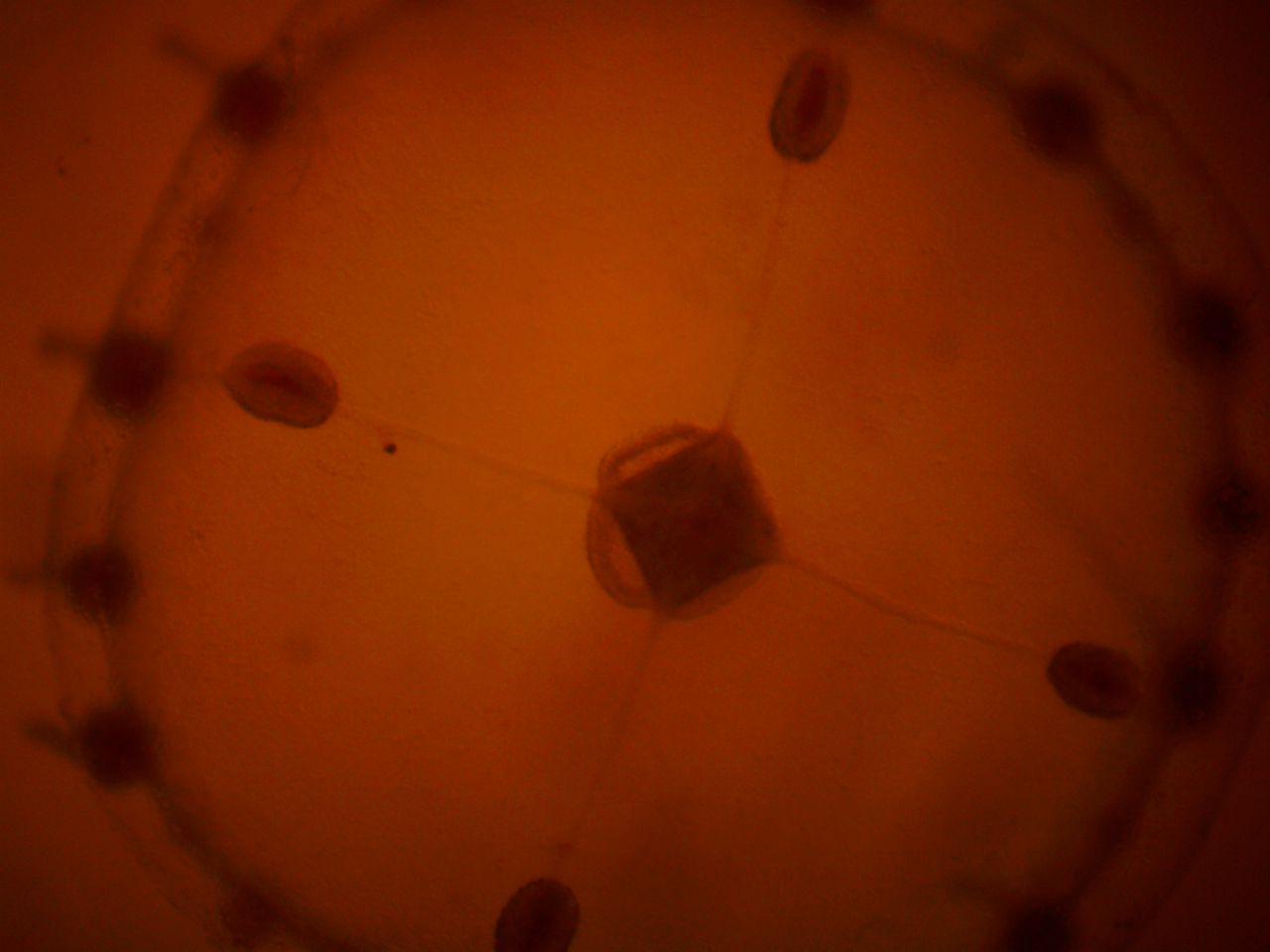Obelia dichotoma Linnaeus, 1758: Medusa form (See also the Polyp Form)Common name(s): Sea plume, branched Obelia |
|
| Synonyms: |  |
|
Phylum Cnidaria
Class Hydrozoa
Suborder Leptomedusae (Thecata)
Family Companulariidae
|
|
| Obelia dichotoma from a nocturnal surface plankton trawl. Diameter 2.5 mm. | |
| (Photo by: Dave Cowles, July 2017) | |
Description: The Obelia dichotoma medusa is a small hydromedusa with the bell diameter greater than its height. It has no ocelli. The manubrium is short. More than 16 unbranched tentacles, all about the same size, are distributed evenly along the margin of the bell. The tentacles do not contain prominent rings of nematocysts. The 4 radial canals do not branch, nor do they have major diverticula. The gonads are nearly spherical and attached about halfway along the radial canals. They move farther out along the canal as the medusa matures. 8 statocysts. Diameter up to 4 mm.
How to Distinguish from Similar Species: TheObelia geniculata medusa is about the same size and shape and has similar gonads, but the gonads are located closer to the mouth and move out to about halfway along the radial canal as the medusa grows.
Geographical Range: Alaska to San Diego, and worldwide in temperate zones
Depth Range: Pelagic
Habitat: Pelagic
Biology/Natural History: The medusae
are about 0.5 mm diameter when they bud off the polyp. The change in morphology
as the medusae grow makes correct identification and following the natural
history difficult. They can be found along our coast in mid-spring through
mid-automn. The medusae
produce eggs and sperm. A fertilized egg grows into a planula
larva. In Bodega Bay (CA) planula
larvae from the medusae
settle and begin growing into new colonies in winter, spring, and early
summer.
| Return to: | |||
| Main Page | Alphabetic Index | Systematic Index | Glossary |
References:
Dichotomous Keys:Kozloff, 1987, 1996
General References:
Morris
et al., 1980
Wrobel and Mills, 1998
Scientific Articles:
Web sites:
General Notes and Observations: Locations, abundances, unusual behaviors:

A slightly closer view of the same individual. See the short manubrium
projecting from the central stomach, and the 4 radial
canals with the gonads attached to them a bit over halfway out on the
canals.
Authors and Editors of Page:
Dave Cowles (2017): Created original page
CSS coding for page developed by Jonathan Cowles
Salish Sea Invertebrates web site provided courtesy of Walla
Walla University